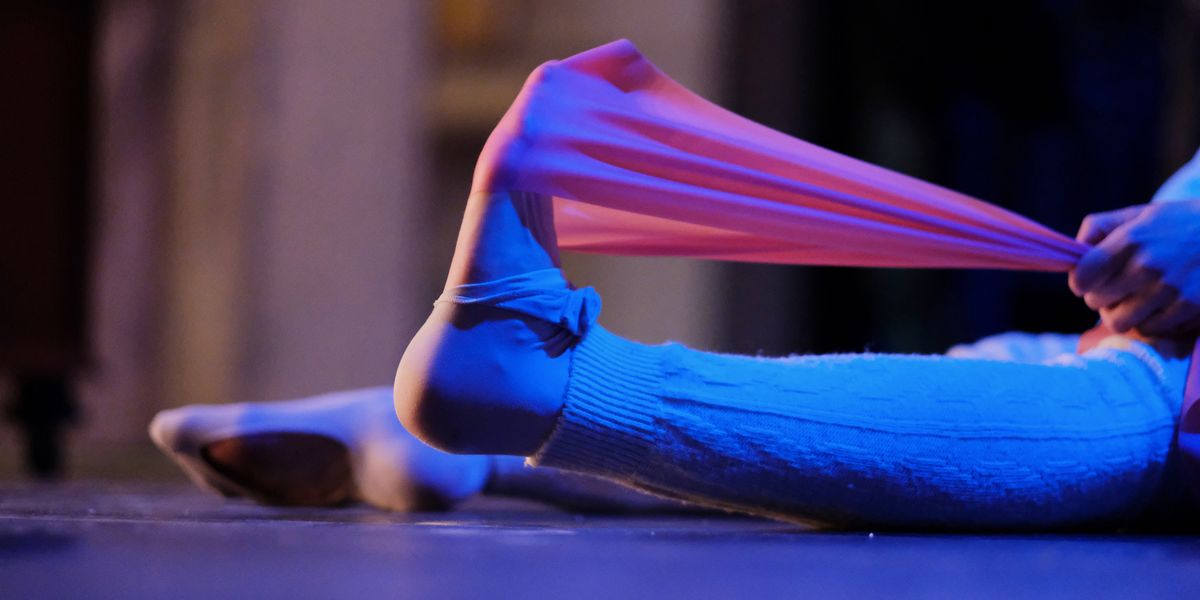10 Pro Tips for Creating Your Own Backstage Warm-Up
Nutcracker season is officially upon us, which means the ballet world is swept up in a tizzy of rehearsals, double-show days and winter magic (just the way we like it!). Amidst the hustle and bustle of the season, dancers have to make smart decisions about warming up—especially between matinee and evening shows. While companies often provide warm-up class, you never know when the unexpected might hit, and it’s important to understand how to craft your own.
To help, we caught up with Miami City Ballet dancer Julia Cinquemani, and ballet master Steven Annegarn of Pittsburgh Ballet Theatre to get expert advice on how to create a personalized warm-up barre. Check out their tips below.
1. Take inspiration from your favorite classes.
“If you’re taking class and you find a combination you like that also warms up the parts of your body you need, write it down so you don’t forget it,” Cinquemani says. “Over time you’ll create a list of combinations you know work for you, and you won’t leave anything out. You’ll have a full class to pull from!”
2. Give your body what it’s asking for, not just what’s ritual.
“Creating your own warm-up barre means you can listen to your body and personalize it,” Annegarn says. “Don’t spend time doing something your body doesn’t need. If it’s the second performance of the day, you’re probably really tired. Don’t waste your time and energy doing the same full barre you did earlier that morning.”

3. Combine combinations to save time..
“I do a shortened version of a full barre, but I don’t like to leave any combinations out,” Cinquemani says. “One way to condense a barre is to combine different types of combinations in one.”
Needing inspiration for how to do this? Here’s an example of the combinations Cinquemani puts in her warm-up barre:
- Pliés
- 2 tendu combinations that incorporate plié
- Dégagé with piqué
- Fondu with pas de cheval
- Rond de jambe with temps lié
- Fast rond de jambe à terre
- Leg swings
- Grand battement with développé
Don’t forget to incorporate port de bras and cambré throughout. “It’s just as important to warm up your back and upper body as it is to warm up your legs.”
4. Shape your warm-up around the specific role you’re performing that day.
“I tailor what I do around what I am dancing,” Cinquemani says. “If I have to do a lot of jumping in the performance, I’ll get out there (after doing barre) when the stage is open and do my changements and one-legged jumps. You have to warm your body up properly for whatever it is you’re about to do.”
5. That said, don’t slack off if it’s not a major performance for you.
“Get your whole body warm,” says Annegarn. “Even if it isn’t a big role, it’s not good to go onstage when you aren’t physically prepared. Injuries happen when you’re not warm.”
6. Take it slow.
“Work slowly—you don’t want to pull anything,” Cinquemani says. She does this by gradually increasing the pacing of her steps as her body warms.
 Getty Images
Getty Images7. Get your heart rate up.
“It’s important to get your heart rate up rather than just make positions,” Annegarn says. He recommends beginning your warm-up with something that is comfortable for your body, like light leg swings or sit-ups. “Dancers tend to jump right into stretching because it feels good, but you don’t want to do that without proper blood flow.”
8. Remember that your warm-up is not a workout.
“Don’t get macho,” Annegarn says. “I’ll often see dancers prepare for big lifting roles like Arabian by doing dozens of push-ups. Don’t do that. Fatigue and lactic acid won’t help you onstage. A few push-ups might be okay, but this is not the time to work out.”
 Cinquemani and Kenta Shimizu in Los Angeles Ballet’s production of The Sleeping Beauty. Reed Hutchinson, Courtesy L.A. Ballet
Cinquemani and Kenta Shimizu in Los Angeles Ballet’s production of The Sleeping Beauty. Reed Hutchinson, Courtesy L.A. Ballet
9. Give yourself ample time.
Cinquemani’s warm-up is typically about 30 minutes. “It’s cold backstage, so I put my warm-ups on (booties and leg warmers) and begin doing my own condensed barre on flat. Once I’ve finished, I put on my pointe shoes and do relevés on two feet before moving to one foot.”
Cinquemani gives herself an extra 15 minutes after finishing her barre to get onstage and do sautés, big jumps, and whatever other steps she needs to practice before the curtain goes up. “Don’t leave it to the last minute,” she says. “Things always come up—your costume might have issues, or any number of things could go wrong, but if you’ve given yourself ample time to prepare, you won’t have to worry about whether you’re warm or not.”
10. Don’t forget to warm up mentally.
“I visualize exactly how I’m going to execute the steps, and think about corrections I’ve been given,” Cinquemani says. “Half of the success I have out there is because I prepare for it mentally. I often do completely different roles in the matinee than I do in the evening, and I have to get in the right headspace so I don’t have any surprises.”





